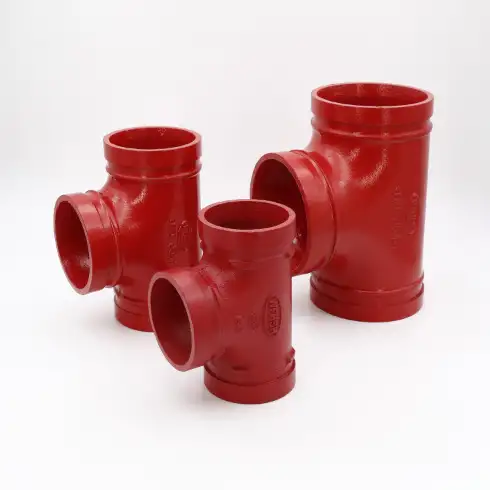ASTM A536 Grade 65-45-12 ductile iron is a widely used material known for its excellent strength, ductility, and machinability. Understanding its properties and how it compares to similar materials globally is crucial for engineers, designers, and manufacturers. This article provides an in-depth look at ASTM A536 Grade 65-45-12 ductile iron, its mechanical properties, applications, and international equivalents.

1. What is ASTM A536 Grade 65-45-12 Ductile Iron?
ASTM A536 Grade 65-45-12 is a specification for ductile iron castings, also known as nodular cast iron. The numbers 65-45-12 refer to the minimum tensile strength (65,000 psi), yield strength (45,000 psi), and elongation (12%) of the material. This grade is characterized by its ferritic-pearlitic microstructure, providing a balance between strength and ductility.
2. Mechanical Properties of ASTM A536 Grade 65-45-12
| Property | Value |
|---|---|
| Tensile Strength | 65,000 psi (448 MPa) |
| Yield Strength | 45,000 psi (310 MPa) |
| Elongation | 12% |
| Hardness (HB) | 131 – 220 |
| Impact Resistance | High |
These properties make ASTM A536 Grade 65-45-12 suitable for applications requiring moderate strength and good ductility.
3. Chemical Composition
The typical chemical composition of ASTM A536 Grade 65-45-12 includes:
| Element | Percentage (%) |
|---|---|
| Carbon | 3.4 – 3.9 |
| Silicon | 2.5 – 3.0 |
| Manganese | 0.15 – 0.35 |
| Sulfur | ≤ 0.020 |
| Phosphorus | ≤ 0.060 |
This composition contributes to the material’s excellent machinability and moderate strength.
4. Applications of ASTM A536 Grade 65-45-12
ASTM A536 Grade 65-45-12 is commonly used in:
-
Automotive components
-
Pump housings
-
Valve bodies
-
Gearboxes
-
Structural components
Its combination of strength and ductility makes it ideal for these applications.
5. International Equivalents of ASTM A536 Grade 65-45-12
ASTM A536 Grade 65-45-12 has several international equivalents:
| Standard | Equivalent Grade |
|---|---|
| ISO 1083 | 450-10 |
| SAE J434C | D4512 |
| UNS | F33100 |
| DIN 1693 | GGG50 |
| EN 1563 | EN-GJS-450-10 |
| China GB 1348 | QT450-10 |
These equivalents ensure that the material meets similar mechanical and chemical properties across different standards.
6. Comparison with Other Ductile Iron Grades
| Grade | Tensile Strength | Yield Strength | Elongation | Application |
|---|---|---|---|---|
| 65-45-12 | 65,000 psi | 45,000 psi | 12% | General purpose |
| 80-55-06 | 80,000 psi | 55,000 psi | 6% | High strength |
| 100-70-03 | 100,000 psi | 70,000 psi | 3% | Heavy-duty parts |
| 60-40-18 | 60,000 psi | 40,000 psi | 18% | Lower strength |
This comparison highlights the range of ductile iron grades available for different applications.
7. Advantages of ASTM A536 Grade 65-45-12
-
High Strength: Provides a good balance between strength and ductility.
-
Excellent Machinability: Allows for easy machining and finishing.
-
Good Wear Resistance: Suitable for components subject to wear and tear.
-
Versatility: Applicable in various industries and components.
These advantages make ASTM A536 Grade 65-45-12 a popular choice for many applications.
8. Heat Treatment of ASTM A536 Grade 65-45-12
While ASTM A536 Grade 65-45-12 is often used in the as-cast condition, heat treatment can be applied to enhance its properties:
-
Annealing: Improves machinability and reduces internal stresses.
-
Normalizing: Refines grain structure and improves mechanical properties.
-
Tempering: Enhances toughness and reduces brittleness.
The choice of heat treatment depends on the specific application requirements.
9. Cost Considerations
The cost of ASTM A536 Grade 65-45-12 is influenced by factors such as material availability, manufacturing processes, and market demand. Generally, it is more cost-effective than higher-strength grades like 100-70-03 but may be more expensive than lower-strength grades like 60-40-18. It’s essential to consider the performance requirements and budget constraints when selecting the appropriate grade.
10. Frequently Asked Questions (FAQs)
Q1: What is the significance of the numbers 65-45-12 in ASTM A536 Grade 65-45-12?
A1: The numbers represent the minimum tensile strength (65,000 psi), yield strength (45,000 psi), and elongation (12%) of the material.
Q2: Can ASTM A536 Grade 65-45-12 be welded?
A2: Yes, it can be welded using appropriate procedures. However, preheating and post-weld heat treatment may be necessary to minimize the risk of cracking.
Q3: How does ASTM A536 Grade 65-45-12 compare to steel?
A3: While it has similar strength to mild steel, ASTM A536 Grade 65-45-12 offers better castability and damping properties.
Q4: Is ASTM A536 Grade 65-45-12 suitable for high-temperature applications?
A4: It can withstand temperatures up to approximately 450°F (232°C). For higher temperatures, grades like 60-40-18 are more suitable.
Q5: What industries commonly use ASTM A536 Grade 65-45-12?
A5: It is used in automotive, agricultural, and industrial applications, including components like gears, housings, and brackets.
Q6: How does the cost of ASTM A536 Grade 65-45-12 compare to other grades?
A6: It is generally more affordable than higher-strength grades but may be more expensive than lower-strength grades. The choice depends on performance requirements and budget.
Conclusion
ASTM A536 Grade 65-45-12 ductile iron is a versatile material offering a balance between strength and ductility. Its international equivalents ensure consistent performance across different standards. Understanding its properties, applications, and global equivalents is essential for selecting the appropriate material for specific applications.
